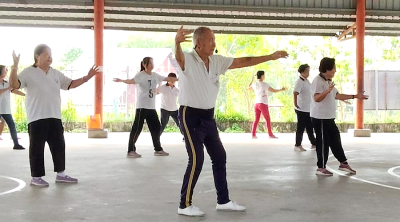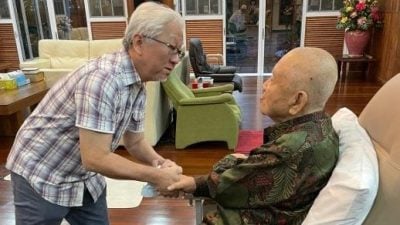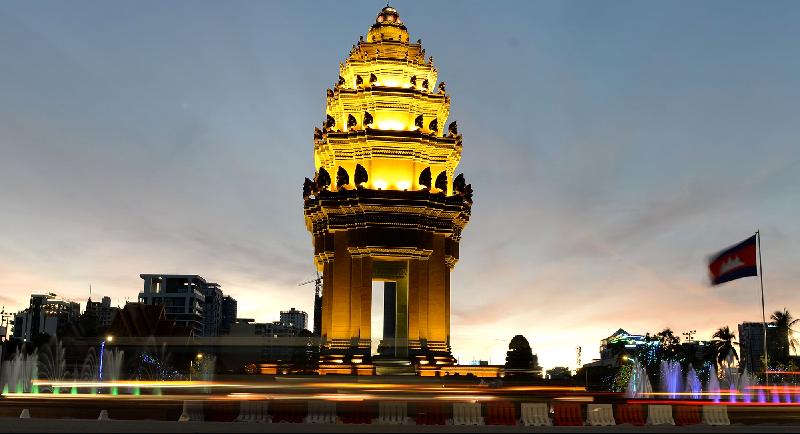
40 years ago on January 7, the Cambodian military forces overthrew the Khmer Rouge regime with the help of the Vietnamese army.
"The Chinese people here suffered a lot during Khmer Rouge's time," said Tuan Hua Chinese School principal Liang Suming.
"It was total discrimination. They wanted us to work but didn't allow us to eat."
After Khmer Rouge captured the capital Phnom Penh, the local Chinese residents were forced to leave the city to work in farms in the rural areas. Almost the entire Phnom Penh was emptied in three days. Liang, who was only 26 at that time, was among those forced to work in the countryside.
"They told us we would only leave the city for three days. So we didn't bring along too many things, only a few pieces of clothing and several cans of rice.
"Many Chinese people were subsequently starved to death or died of sickness."
An estimated two million Cambodians were executed or died of sickness, starvation or overwork during the three years, eight months and 20 days under Khmer Rouge rule. This means 2.7 out of ten Cambodia's population were exterminated during that period of time.
Before Khmer Rouge, there were some 600,000 Chinese in the country, and the number was drastically halved to only around 300,000 during its short rule.
Four out of Liang's family of four died on the way to the countryside.
"No choice! We were not allowed to eat and were forced to walk for very long. I lost four in my family!"
A 2005 survey showed that 62% of the 586 Cambodian refugees in Long Beach, California suffered from post-traumatic stress disorder (PTSD), and half from depression as well.
Fleeing the country
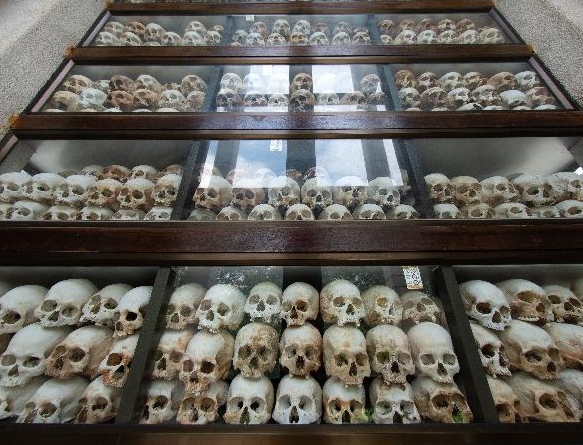
The two-decade long oppression of Chinese education and the Chinese community in Cambodia happened way before the arrival of Khmer Rouge. In 1970, then prime minister Lon Nol was seen as pro-America while King Sihanouk was pro-Soviet and pro-communist. Lon Nol initiated a coup while the king was on a state visit to China and Soviet Union, and overthrew the king.
Chinese Cambodians were largely perceived as communist sympathizers and the government instructed the closure of Chinese schools and Chinese newspapers in the country and even banned Chinese language signs at shops.
Khmer Rouge took over five years later and began to enact new laws to clamp down on private businesses, dealing a severe blow on the local Chinese community.
It was reported that Chinese made up some 95% of all the businesspeople in the whole of Cambodia. In other words, the economic activities of the local Chinese community was fatally bruised at that time.
After the Khmer Rouge regime was toppled, the Vietnamese occupied Cambodia, but the nightmares of Chinese Cambodians did not end because of that. The new government enforced an anti-Chinese policy and many Chinese Cambodians were forced to flee the country.
Ung Hong Meng, deputy chairman of the Teochew association and executive vice chairman of the Federation of Khmer Chinese in Cambodia, told Sin Chew Daily having gone through the darkest times of yesterday, the Chinese people in Cambodia can eventually see a speck of light with the hope social and political stability will return to the country soon.
Ung, who is also the chairman of the local Chinese newspaper Jianhua Daily, feels that the government's policies today are favorable to the local Chinese community, including trade freedom and the establishment of Chinese schools. Chinese Cambodians slowly begin to recoup their lost confidence.
"As Chinese, we hope the government is not anti-Chinese and will allow us to have the freedom to run our own businesses as well as schools."
New beginning
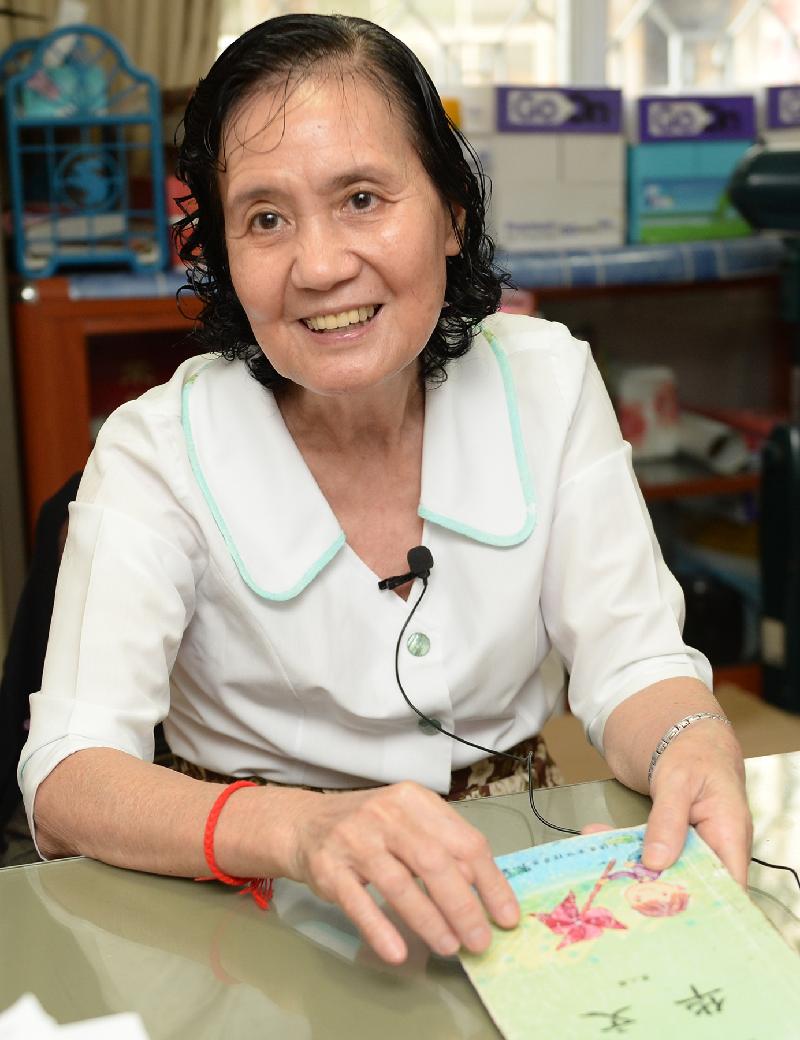
When the Khmer Rouge regime was toppled, many people opted to flee to a neighboring country before settling down in Western countries. Liang Suming admitted that indeed she had thought of leaving but lacked the financial ability. Given the fact there were limited capacities at various refugee camps, she had no choice but to stay back.
"I tried to leave the country but did not get the chance. There were simply too many of us and the refugee camps just would not take us.
"For those who could not leave, we had to find our ways to survive. We had to start everything afresh like the local people!"
Liang later chose to become a tutor and teach the new generation Chinese Cambodians the Chinese language.
"Teachers could make some money by opening tuition classes and we took this opportunity to bring young Chinese together and pass down the Chinese language and culture."
The government allowed Chinese schools to be set up only in 1992.
There were 1,700 students when Tuan Hua Chinese School was established in 1992. Following the increase in demand for Chinese education, a branch was set up in Phnom Penh, and today these two schools have a combined enrollment of around 15,000 students.
We visited the school and found that the classroom was facing a side door leading to a temple.
Liang explained that the area surrounding the temple was a predominantly Chinese community.
"The school was built after the temple. It was the religious faith that brought the local Chinese people together. We later had the Association of Chinese Teochew which started providing education for the local Chinese."
The five Chinese schools in Phnom Penh — Tuan Hua, Chhong Cheng, Min Sheng, Ji Cheng and Guang Zhao — respectively belong to the Teochew, Hakka, Hokkien, Hainanese and Guangzhao associations.
When the government began to liberalize its cultural policy in 1990, these five clan associations jointly formed the Federation of Khmer Chinese in Cambodia to coordinate the development of Chinese education in the country.
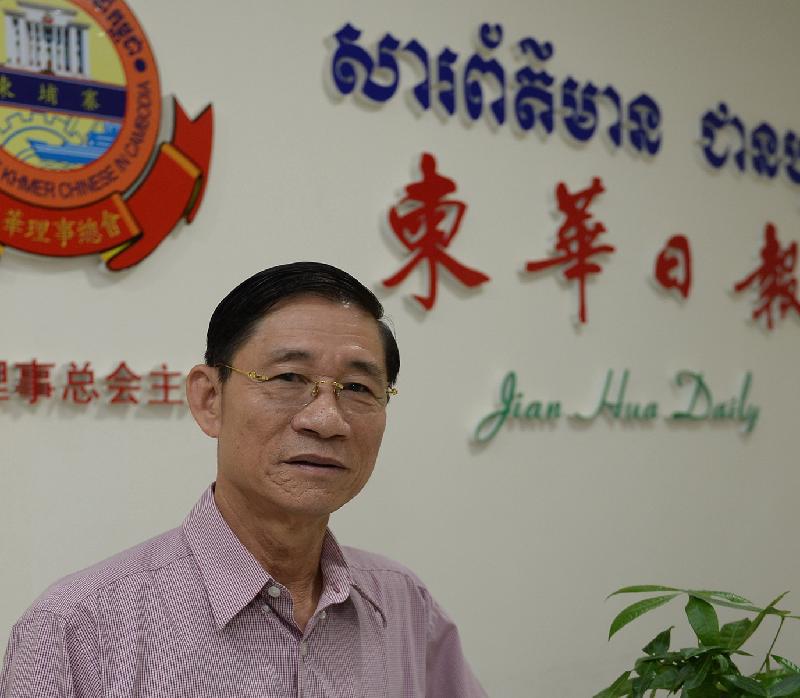
ADVERTISEMENT
ADVERTISEMENT










